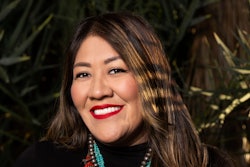 Oliver Schak, research director at The Institute for College Access & Success
Oliver Schak, research director at The Institute for College Access & Success
“A college degree is more essential than ever for upward social mobility and economic stability,” said Oliver Schak, the report’s author and the research director at TICAS. “But we are seeing an alarming trend with how resources are unevenly distributed.”
Seeking to track the funding and resource patterns at four-year colleges and universities, which educate about three-quarters of all students, the report analyzed federally collected revenue data spanning the Great Recession to the height of the last economic recovery, or 2006 to 2018.
The analysis found that in 2006, BIPOC students accounted for 33% of enrollment at public institutions. Yet by 2018, almost 45% of students identified as BIPOC and the institutions that mostly teach these students remained underfunded by state, local, and federal governments.
For example, community colleges in 2018 to 2019 received almost $900 less per student from states and localities than doctoral-granting universities. However, community colleges educate the highest proportion of BIPOC students, the report noted.
“Even at the peak of the economic recovery in 2018, higher education remained inadequately and inequitably funded with a pattern of disproportionately harming BIPOC students,” Schak said. “And while there has been a downward trend in state support, there has been an upward trend in tuition as well as student debt, especially for BIPOC students.”
Many institutions that mostly educate BIPOC students have been shifting the burden of paying for college on to students and families. Historically Black Colleges and Universities (HBCUs) as well as Predominantly Black Institutions (PBIs), for instance, saw tuition skyrocket. During that 12-year period from 2006 to 2018, the per-student tuition and fee revenue at HBCUs and PBIs jumped by 65% in today’s dollars, which is more than double the inflation rate.





















